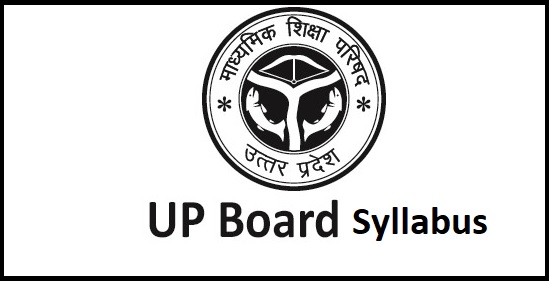NIOS Class 12 Physics Syllabus 2024-25

Physics is certainly one of the most important subjects as far as the Class 12th science stream is concerned. It not only helps in clear the annual exam but also helps in many of the competitive exams as well. NIOS Class 12th Physics syllabus 2024-25 comprises of the units and chapters from which the question paper of the final exam will be created. All the students should get familiar with the complete syllabus before starting the exam preparation. Go through this post to find out all the necessary details regarding the NIOS Class 12 Syllabus of Physics subject.
NIOS 12th Class Physics Syllabus 2024-25
Before moving on to the syllabus, it is important to understand the exam structure of NIOS Class 12th Physics. The syllabus consists of 8 core modules and 4 optional modules. Out of 4 optional modules, a candidate has to choose one module. The marks and study hours allotted to core and optional modules are as follows.
| Type of Modules | Marks | Minimum Study Hours |
| Core modules | 70 | 225 |
| Optional modules | 10 | 30 |
| Total | 80 marks | 255 hours |
Marks and study hours for each module (both core and optional) are given below in the table below
| Core Modules | ||
| Name of Module | Marks | Minimum Study hours |
| Motion, force and Energy | 14 | 45 |
| Properties of Matter | 08 | 25 |
| Heat and Thermodynamics | 06 | 20 |
| Electricity and Magnetism | 14 | 45 |
| Oscillations and Waves | 06 | 20 |
| Optics and Optical Instruments | 08 | 25 |
| Atoms and Nuclei | 07 | 25 |
| Semiconductors and their Applications | 07 | 20 |
| Total | 70 marks | 225 hours |
| Optional Modules (any 1 out of 4) | ||
| Name of Module | Marks | Minimum Study hours |
| Astrophysics | 10 | 30 |
| Electronics | 10 | 30 |
| Photography and Audio-Videography | 10 | 30 |
| Physics in Medical Sciences | 10 | 30 |
Detailed syllabus of NIOS class 12th Physics Subject
Here is the syllabus NIOS physics subject of class 12th in a detailed manner
Syllabus of Core Modules
Module 1: Motion, Force and Energy
- Dimensional Analysis and Vectors
- Units
- Dimensions
- Dimensional formula
- Application of dimensional equations
- Vectors and their representation (graphically)
- Resolution of vectors in to rectangular components (two dimensions)
- Addition and subtraction of vectors
- Motion in a Straight Line
- Distance and displacement,
- Speed and Velocity with special reference to average and relative velocity
- Instantaneous velocity
- Uniform motion with examples.
- Non-uniform motion (constant acceleration) with examples.
- Graphical representation of motion in two dimensions (including that of constant
- acceleration)
- Equations of Motion with numerical problems.
- Newton’s Laws of Motion
- Concept of force and inertia
- First law of motion with examples
- Second law of motion with concept of momentum and force.
- Third law of motion with examples.
- Free body diagram.
- Conservation of linear momentum
- Friction and lubrication
- Motion in a Plane
- Projectile motion (equation, time of flight, rang, and maximum height)
- Uniform circular motion (radial and tangential acceleration)
- Centripetal acceleration
- Application of circular motion
- Uniformly rotating frame of reference and non-inertial force (centrifugal force)
- Relation between velocity and angular velocity
- Gravitational motion
- Newton’s universal law of gravitation.
- Inertial mass and gravitational mass.
- Acceleration due to gravity and its variation.
- Kepler’s laws.
- Motion of planets, orbital and escape velocity.
- Satellites – geostationary, weightlessness.
- Work, Energy and Power
- Work done by a constant force.
- Work done by a carrying force (graphical method) with example of spring.
- Work-energy relation
- Conservative and non-conservative force.
- Mechanical energy (kinetic and potential) with examples.
- Conservation of energy, (spring, pendulum, etc.)
- Elastic and inelastic collision
- Power and its units
- Rotational Motion
- Rigid body motion, center of mass, couple and Torque.
- Moment of inertia, radius of gyration and its significance.
- Theorems of Motion for a uniformly rotating rigid body (no derivation)
- Angular momentum and its conservation with simple application.
- Rotational and translational motions with example (motion of ball, cylinder, flywheel on an inclined plane.
Module 2: Mechanical Properties of Matter
- Properties of solids
- Elastic properties and hook’s law.
- Young’s modules, Bulk modulus, modulus of rigidity and compressibility.
- Applications of elasticity-cantilever, girder etc.
- Properties of Liquids
- Hydrostatic pressure and buoyancy.
- Pascal’s law and its application
- Forces of Cohesion and adhesion
- Surface energy and surface Tension.
- Angle of contact and capillary action.
- Application of surface tension, liquid drops, bubbles and detergents
- Types of liquid flow-laminar and turbulent, Reynolds number,
- Viscosity and Stoke’s law.
- Bernoulli’s Theorem (no derivation) and its applications.
- Properties of Gases
- Kinetic theory of gases (with derivation of ideal gas equation state)
- E. and temperature relationship
- Specific heat of gases, equilibrium of heat.
- Specific heats Cp and C v and their relationship
Module 3: Heat and Thermodynamics
- Laws of thermodynamics
- Thermodynamic variables, concept of heat, and thermodynamic equilibrium.
- Temperature and its measurement.
- Principle of Calorimetery.
- Thermodynamic processes – isothermal, adiabatic, reversible, irreversible and cyclic process
- First law of thermodynamics – internal energy
- Second change, phase diagram, latent heat, triple point, and concept of entropy and its significance.
- Carnot’s Cycle and its Efficiency.
- Transfer of heat
- Conduction of Heat
- Convection of Heat
- Radiation of Heat
- Black Body Radiation
- Wien’s Law
- Stefan’s Law
- Green House Effect
- Newton’s Law of Cooling.
Module 4: Electricity and Magnetism
- Electrostatics
- Properties of electric charge-quantizations & conservation.
- Coulomb’s law (vector form)
- Electric field and field or point charge (through diagram)
- Force in and charged particle in electric field.
- Electric field of a dipole and dipole moment
- Behavior of electric dipole in uniform electric field.
- Electric Potential due to appoint charge, due to a dipole and potential energy.
- Relation between electric field and potential
- Statement and use of Gauss theorem Determining electric field of a point charge, ling wire, plane sheet, solid sphere, spherical shell.
- Conductors, and field inside conductor, electrostatic shielding.
- Capacitors and their combinations
- Dielectric and their polarization
- Electric field in dielectric, capacitor with dielectric
- Electric Current
- Electric current in a conductor
- Ohm’s law, Resistivity of material and Colour coding of resistors.
- Combination of resistances (series and parallel)
- Kirchoff’s laws and their application to electrical circuits
- Wheatstone bridge principle
- Potentiometer and its application
- Chemical and Thermal Effects of Electric Current
- Heating effect of electric current, joules law of heating
- Electrolysis – Faraday’s laws of electrolysis and their application
- Thermoelectricity (Seabeck, peltier and Thomson effect (only qualitative)
- Magnetic Effect of Electric Current
- Magnetic effect of electric current
- Bio-Savart law – Magnetic field at the center of a coil carrying current (qualitative treatment)
- Amprere’s circuital law and its application in finding magnetic field of a wire loop (at a center), toroid and solenoid.
- Force on a current carrying wire in a uniform magnetic field and definition of ampere.
- Force on a charged particle in a magnetic field and Lorentz force.
- Magnetic dipole moment of a current loop (vii) Torque on a current loop in magnetic field.
- Moving coil Galvanometer and its conversion into ammeter and voltmeter.
- Magnetism
- Magnet and magnetic field
- Components of Earth’s magnetic field
- Molecular theory of magnetism (qualitatively)
- Dia, para and Ferro magnetic materials
- Electromagnetic Induction and Alternating Current
- Faraday’s law of electro-magnetic induction
- Lenz’s law
- Self and mutual induction
- Growth and decay of current in L. R and CR circuits (qualitative)
- Alternating current and voltage, illustrating with phase diagram – Peak and RMS values.
- Circuits containing only R. L or C separately, their phase relationship between I&V
- Power in AC circuit – Power factor and watts current (pure inductor and Pure capacitor)
- LCR series combination (using phaser diagram only) and resonance.
- Electric Power Generation and its Transmission
- Generators – AC and DC
- Transformers
- Transmission of power (domestic and industrial distribution)
- Various energy sources, electrical power generation – hydro-electricity, chemical energy, molecular energy, wind energy and solar energy.
- Status of Electric power in India.
- Problem of low voltage and load shedding
Module 5: Oscillation and Waves
- Simple Harmonic Motion
- Periodic motion – amplitude, period frequency and phase
- Simple Harmonic Motion as a projection of uniform circular motion with
- Examples of spring and simple pendulum.
- Forced oscillations – resonance with examples.
- Damped oscillations with example (without mathematics)
- Elastic Waves
- Moving pulse, harmonic waves, wavelength, frequency, speed and their relationship, amplitude of wave
- Wave motion in taut string, formula for its speed.
- Wave motion in gaseous medium and formula for its speed.
- Phase difference between two harmonic waves.
- Superposition of waves – interference of waves, reflection of waves from rigid boundary, standing waves and beast (only qualitative treatment, with equation)
- Characteristics of sound waves.
- Threshold of hearing, intensity of sound and its unit.
- Shock waves, noise pollution.
- Resonance column (overtones and harmonics) only through diagram
- Doppler’s effect and its application.
Module 6: Optics
- Reflection and Refraction of Light
- Reflection of light from spherical mirrors, sign convention.
- Mirror formulae and problems based on it.
- Reflection of light, Snell’s law of refraction
- Total Internal Reflection and its application.
- Refraction through single curved surface and lenses.
- Lens maker’s formula and magnification
- Power of lens.
- Combination of lenses.
- Dispersion and Scattering of Light
- Dispersion of light through prism
- Spectrometer and its uses
- Spherical and chromatic aberration.
- Scattering of light in atmosphere
- Rainbow
- Electromagnetic waves
- Maxwell’s theory of EM-waves
- Properties of EM-waves
- EM-waves spectra
- EM-waves propagation and their application
- Wave Properties of Light
- Nature of light
- Light as wave
- Huygen’s wave theory and wave propagation – reflection and refraction
- Interference – Young’s double slit experiment
- Diffraction of light (qualitative)
- Polarization, polarization by reflection and its application in daily life
- Optical instruments
- Compound microscope and its magnifying power
- Telescope – astronomical (Newton’s reflector) and terrestrial
- Resolving power in terms of Rayleigh’s criteria
- Resolving power of eye, telescope and microscope
Module 7: Atoms and Nuclei
- Structure of Atom
- Alpha –particle scattering and Rutherford’s atomic model
- Bohr’s atomic model, energy levels in electron volts
- Hydrogen Spectrum
- Photoelectric Effect and Mater Waves
- Emission of electrons
- Photoelectric effect and its explanation
- Photocell and its applications
- Wave nature of matter, de-Broglie Waves – Davission and Germer Experiment
- Nuclei and Radio – Activities
- Atomic mass unit, mass number, size of nucleus
- Isotopes and neutrons
- Mass-energy equivalence (MeV)
- Mass defect and binding – energy curve
- Radio activity – α, β decay and γ emission
- Half life and decay constant of nuclei
- Application of radioactivity in carbon dating, medical and agriculture.
- Nuclear Fission and Fusion
- Fission reaction
- Fusion reaction
- Energy in stars
- Nuclear reactor
- Peaceful and destructive application of Nuclear Energy
- Nuclear Pollution
Module 8: Semiconductors and their Applications
- Basics of Semiconductors
- Energy bands in solids
- Conductors, insulators, and semiconductors (on the basis of electrical conductivity)
- Charge carries in semiconductors-Holes and electrons
- Electrical conductivity of semiconductors
- Intrinsic and extrinsic semiconductors
- P-type and n-type semiconductors.
- Semiconductor Devices
- PN – junction diode
- Characteristic of PN-junction diode
- Types of diode
- Transistor – PNP and NPN
- Characteristic curves of a transistor
- Applications of semiconductor Device
- PN-junction diode as a rectifier
- Transistor as an amplifier (common emitter)
- Transistor as a switching device (iv) Logic gates and their realization (OR, AND, NOT, NAND, NOR)
Syllabus of Optional Modules
Option Module 1: Astro Physics
- The Sun and the Solar Family
- The Sun – introduction
- Interesting phenomenon on solar atmosphere – corona.
- Magnetic field in the solar system
- Sunspot cycle, granulation on solar surface, solar flares, prominence
- Planets and their characteristics.
- Comets, meteors, meteoroids and asteroids
- Evaluation of solar system.
- Astronomical Telescopes
- Windows in electro–magnetic spectrum
- Principle and use of refraction and reflecting telescope
- Newtonian and Cassegrainian telescopes- their principles and uses
- X-ray telescope and radio – telescope
- Spherical aberration
- Rayleigh’s criterion
- Stars
- Measuring distances and masses of stars
- Brightness of stars
- Surface temperature of Stars
- Stellar spectra, stellar classification
- R. diagram
- Evaluation of stars – different theories
- Universe
- Our galaxy
- Interstellar gas clouds
- Structure of the galaxy, central bulge, disc of the galaxy
- Halo and corona
- External galaxies
- The expanding universe
- Origin of the universe, evolving universe, steady state universe, cosmic back–ground radiation, open or closed universe
Optional Module 2: Electronics in Daily Life
- Measuring Instruments in Electronics
- Multimeter principle and its uses.
- C R O and its uses for measurement of voltage, frequency and wave form.
- Transducers and their application
- Display Device –L E D, L E D and their uses
- Power Supply and Signal Generating Systems
- Solar cells and their uses
- Frequency generator, power supply inverters, emergency light
- Zener diode as a voltage regulator
- Microprocessor and its Applications
- Microprocessor – architecture and functional blocks
- Instructions – data transfer, control and branch, and input–output
- Uses of microprocessor in household devices
- Circuit Breaker, Timer and Power Control
- Electronic circuit breaker
- Timers, M C B power control.
- Calculator and Electronic watches –principle and operations
Optional Module 3: Photography and Video – Audiography
- Photography – Camera
- Camera – an introduction, part of a camera, camera eye (lens), shutters, special lens
- Types of camera – their basic principle, constructions, and working
- Principle of video camera
- Choosing a camera, picture size.
- Choice of lens–angle of view and resolving power, aperture and focusing.
- Film Exposing and Processing
- Films (storture), types of films
- Film exposure, aperture and speed relationship, use of exposure meter
- Developing the exposed film, developers, ingredients and their functions, preparation of developers, types of developers B & W whored.
- Preservation of developers, methods, field of developments, tray method tank method, precautions during film development
- Film fixing, fixing, washing and drying of film.
- Audio – Video Recording
- Basic principle of recording (Inter-conversion)
- Methods of conversion of video signal into electrical signals.
- Methods of conversion of audio signal into electrical signals
- Storage of audio–video signals on tapes
- Quality of recording, sound recording on cine films
- Tape characteristics, structure and composition, tape format, tape speeds, important tape parameters
- Preservation of tapes, storage techniques, precaution
- Over recording, need for over recording various methods of over – recording, protection of over–recording.
- Compact Disc For Audio – Video Recording
- Compact disc – limitation of traditional audio recording system, lamination video recording system.
- Need for compact disc, advantages of compact disc.
- C D for audio recording.
- Basic principle of audio recording.
- Construction of CD for audio. (
- Methods of CD – audio –recording.
- Care and cautions.
- CD for video –recording, construction of CD for video.
- Basic principle for video recording.
- Methods of CD – video recording.
- General operating and installation precautions.
- CD – players, operating principle.
- Quality of reproduction.




OPTIONAL MODULE OF PHYICS WHERE TO GET THE TEXT
Hello please let me know when the admission process Will start.
My son is 6/3/15 born. Want to take admission in Jr kg.
Thanks
Moumita dg
8879267301